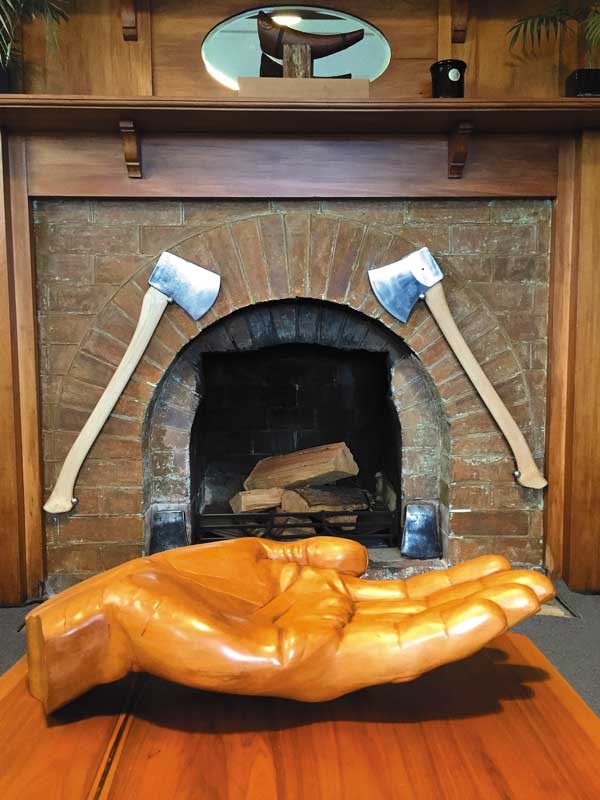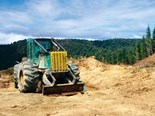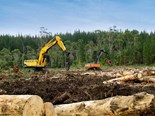Tips for firewood hunters
The chainsaw is one of the most unforgiving hand tools you can use. So don't forget to check out these handy tips!
If you don’t have your firewood in for the winter, then you’re almost too late. My big concern is for those who don’t have the skills and experience to use the devil’s own tool. The chainsaw is one of the most unforgiving hand tools you can use.

When you get it wrong, you can cause serious damage to yourself, and should you be unfortunate to cut yourself, these types of wounds need to be dealt with correctly. From experience, one of my loggers got a kick back and the chain came up through to the side of his boot inflicting a nasty cut to the instep.
One doctor said he did not have the time to do the repair job as it would take a couple of hours to open the wound up, clean it, and then stitch his way out. Consequently, there was no choice but to take the logger to the hospital.
They gave it a quick wash and stitched it up and the logger was sent home. But because of constant infections and further surgery, this logger was off work for eight months before he was fit for work.
The novice or home handyman, before setting out on his firewood hunting expedition, needs to prepare and check his chainsaw, as my guess is it was probably chucked back in the shed after last year’s firewood gathering. Before you head out to your favourite spot, put the chainsaw on the bench and pull it apart.
Take off the top cover, remove the air filter, clean it, and leave it to dry. Put a piece of rag in the hole and clean all around the carburettor under the cover and anywhere else where there has been a build-up of oily sawdust. Chainsaws are air cooled so you want good air flow.

Take off the bar and chain, clean out the grove where the chain sits, file the rails flat and take off any burrs on the rails, clean the oil holes, and check the sprocket that drives the chain for wear.
If possible, use a segment drive rather than a fixed drive, as should you throw the chain off, there’s less chance of damaging the chain.
When putting your saw back together and tightening the chain, hold the chain so the drivers can be just lifted out of the rails. Not too tight and you’re able to push the chain around by hand. Always push the chain away from you going with the teeth.
Another thing to check for is the sharpness of the saw, as blunt ones are dangerous. If you don’t know how to sharpen a chain, take it to someone who does. If you do it yourself, here are some checkpoints.
Get the right size file to fit your chain, as new chains are always harder to sharpen as they have been sharpened by machine and there is a piece in the gullet that needs to be taken out when using a round file. When filing across the top of the tooth, this should be at 30 degrees.
You can keep the file flat or add a 10-degree angle upwards. You can buy an attachment for your file if necessary. If your saw is blunt, it will produce dust; sharpened correctly, it will produce woodchips.
Depth gauges are directly in front of the tooth. These need to be taken down as the chain wears but if you take these down too far, the chain will not cut properly and could cause kick back. Don’t touch them at all and once again it will not cut.
Properly sharpened chainsaw, when cutting, should pull itself through the log; you should not have to force it. How do you hold onto the chainsaw to operate it safely?
When starting, the safest way is to place it on the ground and put your foot through the back handle with one hand on the handlebar when pulling the starter cord. If you have a chain brake, engage to avoid chain spin. Holding your chainsaw properly when operating will greatly reduce the risk of injury.
Always have a solid grip on the handlebar: keep your thumb under the handlebar and never ever let it rest on top of the handlebar. If the saw kicks back, you will have no control, increasing the chances of injury.
Do not rely on the safety equipment attached to your saw; these were invented to prevent bad practice habits. Good control of a well-sharpened and operating saw will let you enjoy the warmth of your fireplace.
Make sure you use the right fuel mix. There’s also a fuel filter in the tank that should be changed. When these block up, it will make your saw run learn and rev out and hard to control. Use clean bar oil. They have an additive to make it sticky and give the chain and bar a longer life; it also protects the oil pump.

The Tasmanians would have to be the best firewood experts I have seen, so here’s a tip when stacking wood. When building your stack on the outside, keep it square by two pieces one way and next, layer up at 90 degrees. It’s simple and you will stack your wood higher.
If you’re using a log splitter or an axe, get a decent splitting block and make sure your axe is sharp and the head is on tightly. Always split away from people standing by. Burn dry wood to get better heat and to avoid soot up the chimney. Stay warm.
See more forestry machinery for sale in NZ
Keep up to date in the industry by signing up to Deals on Wheels' free newsletter or liking us on Facebook.

















